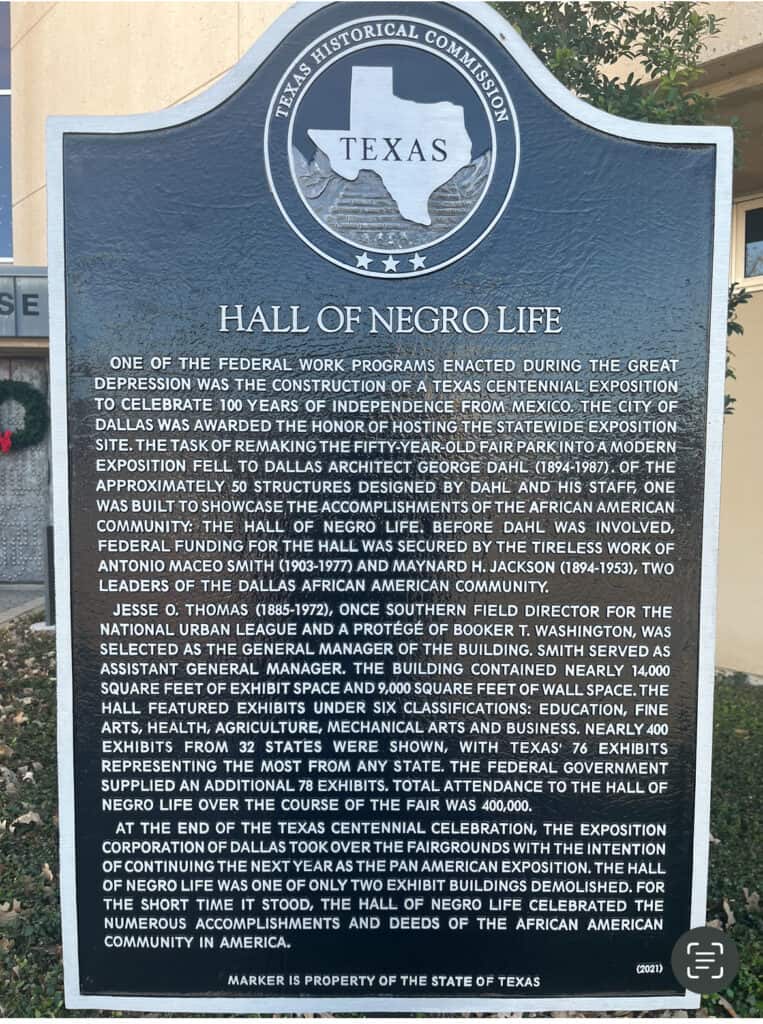HALL OF NEGRO LIFE
History of the hall of negro life
HALL OF NEGRO LIFE.The Hall of Negro Life at the Texas Centennial Exposition of 1936 in Dallas was funded by the federal government at the urging of the Dallas Negro Chamber of Commerce and other Black groups. The federal Negro Advisory Committee, chaired by Eugene K. Jones, planned the exhibition and selected Jesse O. Thomas of the National Urban League as the general manager. Antonio Maceo Smith, a high school principal and leader of the Dallas Negro Chamber of Commerce, became assistant general manager. Other promoters included Willette Rutherford Banks, Samuel Walker Houston, and A. E. Holland. Dallas architect George L. Dahl designed the building, and the Cross Construction Company completed the structure between March 9 and June 12, 1936. Formal dedication was on June 19.
The building faced north next to the Globe Theatre and just east of the General Motors exhibit. A large seal sculpted by Raoul Josset over the door depicted a figure with broken chains. The lobby displayed four murals of Black history in Texas painted by Aaron Douglas. The hall housed six exhibit groups: education, progress in curtailing diseases among African Americans, agriculture, mechanic arts, business and industry, and art. A music collection in the art section recognized performers and composers and played music on a Victrola. The Harmon Foundation of New York City lent a $75,000 collection of Black painting, sculpture, and graphic art to the exposition. Works by Texas artist Samuel A. Countee and well-known artists from other states were displayed in two exhibition rooms.
Thirty-two states and the District of Columbia contributed to the hall; exposition visitors received such pamphlets as W. E. B. Dubois’s What the Negro Has Done for the United States and Texas, Charles E. Hall’s Progress of the Negro in Texas, and Alonzo J. Aden’s Educational Tour through the Hall of Negro Life. A 2,000-seat outdoor amphitheater at the hall presented daily music and drama by Black performers. A “Little Harlem” concession, consisting of a restaurant, dining rooms, and a dance pavilion, operated north of the east wing..Probably more than 400,000 visitors, an estimated 60 percent of them White, entered the hall. A number of Texas colleges sent their White students to observe the Hall of Negro Life, which, like more than half of the buildings built for the Texas Centennial Exposition, was subsequently razed.
On December 9, 2023, a historical marker was dedicated on the grounds of the African American Museum to memorialize this piece of our history.

1976


